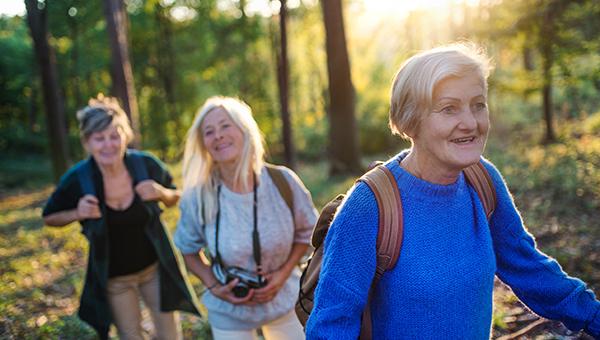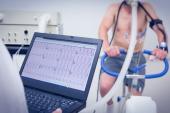Small Amount of Extra Exercise Would Prevent Many US Deaths
On a population level, bumping up activity levels by just 10 minutes/day would avert an estimated 110,000 deaths per year.

Adding just 10 minutes per day to US adults’ physical activity levels could pay big dividends—to the tune of more than 110,000 deaths prevented each year, according to estimates from government researchers.
And tacking on even more daily exercise—an extra 20 or 30 minutes—would go even further, averting between 209,000 and 272,000 deaths annually, researchers led by Pedro Saint-Maurice, PhD (National Cancer Institute, Rockville, MD), report in a research letter published online this week ahead of print in JAMA Internal Medicine.
“These findings support implementing evidence-based strategies to improve physical activity for adults and potentially reduce deaths in the US,” they conclude.
Saint-Maurice underscored that the potential benefits estimated in the study were associated with the addition of at least 10 minutes activity on top of the usual daily amount, not 10 minutes overall. The definition of moderate-to-vigorous activity used in the study could encompass anything from household chores and gardening to more-structured forms of exercise like going for a brisk walk or playing sports, he noted.
“We know exercise is good for us, and if people are struggling with how to fit that exercise into the daily routine, start small,” Saint-Maurice said. People might, for example, park their car farther away from a store before walking inside or, if they’re at home, use their rowing machine or exercise bike for a little bit longer. “That will help people probably reach their goal of being more active during the day, and if that happens and if we can spread that message across the entire adult population, we have a sense of what the outcomes might be, which is really exciting.”
I-Min Lee, MD, ScD (Brigham and Women’s Hospital and Harvard Medical School, Boston, MA), also pitched the “start small” concept—aiming for a realistic goal initially—for getting people to be more active.
“If I asked you to add 30 minutes, I think a lot of people would say, ‘Forget it. I’m not going to even start.’ But if I said add 10 minutes, that seems more feasible, particularly if you are someone who is inactive,” Lee commented to TCTMD.
What that 10 minutes involves won’t be the same for everybody, she said: “Anything counts. It’s not like you have to hit the gym. It’s not like you have to go running. If you’re walking your dog, playing with your grandchildren, or ballroom dancing, all of those count. So rather than make it a chore, find something you like to do.”
The National Impact
The benefits of physical activity are well established and include, for example, lower risks of CVD, some cancers, and diabetes, Saint-Maurice said. So, he said, “knowing that exercise is good for individuals, what would happen if we could create this artificial intervention where we would have every adult in the US do an extra 10 minutes of exercise a day?”
We know exercise is good for us, and if people are struggling with how to fit that exercise into the daily routine, start small. Pedro Saint-Maurice
Prior research has explored this question but there have been limitations: the studies assumed big jumps in activity levels, relied on activity data gleaned from questionnaires, and used convenience samples that were not necessarily representative of the US population at large.
This new analysis was designed to overcome those limitations, with Saint-Maurice and colleagues turning to the National Health and Nutrition Examination Survey (NHANES), which is representative of the US population in terms of age and race/ethnicity. Moreover, physical activity levels are objectively measured in some participants using accelerometers.
The study focused on 4,840 adults ages 40 or older (mean age 57.0 years; 53% women) who participated in the NHANES 2003-2006 cycle and who had useable data from an accelerometer worn for a 7-day period. Moderate-to-vigorous physical activity was defined using a cut point of at least 760 counts/minute. In the overall cohort, the average time spent at this level of activity was 98.2 minutes per day.
Over a mean follow-up of 10.1 years, there were 1,165 deaths. Spending at least 20 minutes per day in moderate-to-vigorous activity was associated with a lower risk of dying during follow-up compared with getting zero to 19 minutes of activity, with the hazard ratio declining from 0.69 to 0.28 as the amount of activity increased.
Even small increases in the amount of added daily activity would lead to major reductions in deaths among US adults, the researchers estimated. For 10 extra minutes, there would be a 6.9% decrease in deaths, translating to 111,174 fewer each year. Adding 20 or 30 minutes of activity each day would correspond to 13.0% and 16.9% (209,459 and 272,297) fewer deaths, respectively.
The number of deaths prevented each year is “a really unique metric that gives right away the sense of what we’re talking about—the importance of physical activity in the public health domain,” Saint-Maurice said. He pointed out that the findings were “fairly similar” across subgroups defined by sex and race/ethnicity.
“To our knowledge, this is the first study to estimate the number of preventable deaths through physical activity using accelerometer-based measurements among US adults while recognizing that increasing activity may not be possible for everyone,” he and his colleagues write. “However, 1 week of monitoring may not reflect changes in activity over time, and the observational study design limits the direct determination of causality.”
‘Make It a Mindset’
Commenting for TCTMD, Claudio Gil Araújo, MD, PhD (CLINIMEX Exercise Medicine Clinic, Rio de Janeiro, Brazil), said it’s not news that exercise is good for health, but he pointed to several strengths of this particular study. The researchers used one of the best data sets available, he said, and had a relatively large number of people to follow, a good mix in terms of age and sex, an appropriate length of follow-up, objective measurements of activity during both weekdays and weekends, and a high enough mortality rate to evaluate the association with activity levels.
Estimates of the number of deaths that could be prevented by adding small amounts of exercise were reasonable, Araújo said, highlighting the clear dose-response relationship observed.
Like Saint-Maurice and Lee, Araújo stressed that adding 10 minutes of activity doesn’t necessarily mean starting a structured exercise routine. Adding more trips up and down the stairs, walking to a more-distant restaurant, or spending more time playing with your children or grandchildren could all contribute to becoming more active, he suggested. “Adding exercise is very important but it should be at least average or high intensity,” he said, pointing out that people who are the least fit and active have the most to gain from moving more.
Lee suggested that people should try to incorporate these types of small changes into their daily mindset—by making it a habit to take the stairs instead of the elevator, for instance. “I know it’s easier said than done,” she acknowledged.
And not all of the responsibility for boosting activity falls on individuals, Lee noted, pointing out that governments can help by ensuring the availability of walkable, safe roads and convenient public transportation.
The implications go beyond preventing deaths at the population level, Lee indicated. “It’s amazing how broad the benefit of physical activity is on all aspects of our health and in some ways how it is—I won’t say discounted—but it doesn’t get a lot of emphasis in the medical community as opposed to the public health community,” she said. “This paper reinforces that a small amount of physical activity can do a lot of good.”
Todd Neale is the Associate News Editor for TCTMD and a Senior Medical Journalist. He got his start in journalism at …
Read Full BioSources
Saint-Maurice PF, Graubard BI, Troiano RP, et al. Estimated number of deaths prevented through increased physical activity among US adults. JAMA Intern Med. 2022;Epub ahead of print.
Disclosures
- Saint-Maurice reports support by the National Institutes of Health Intramural Research Program of the National Cancer Institute.





Comments